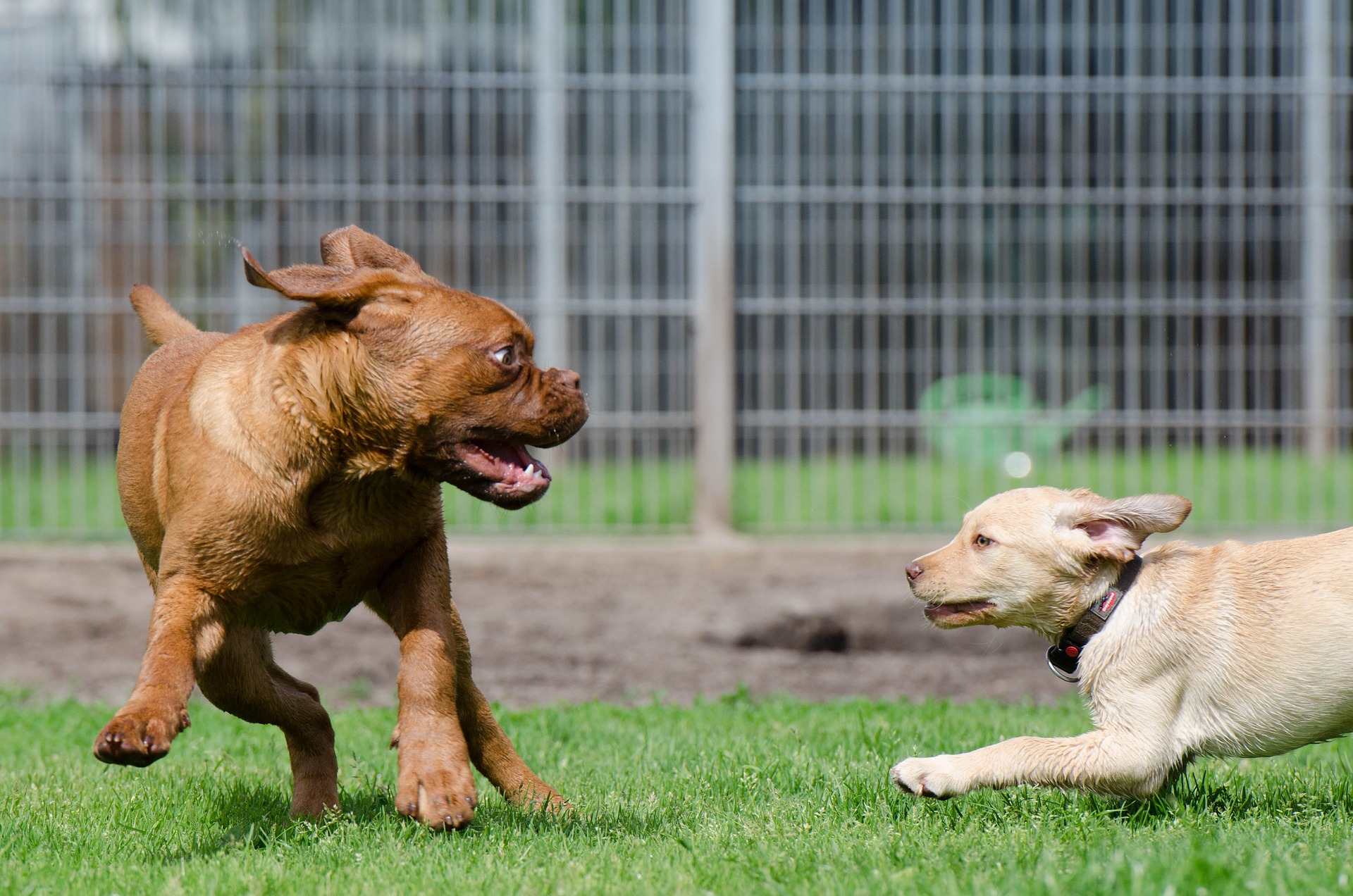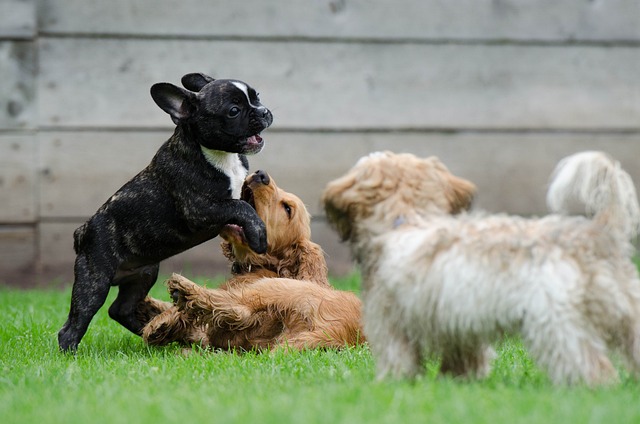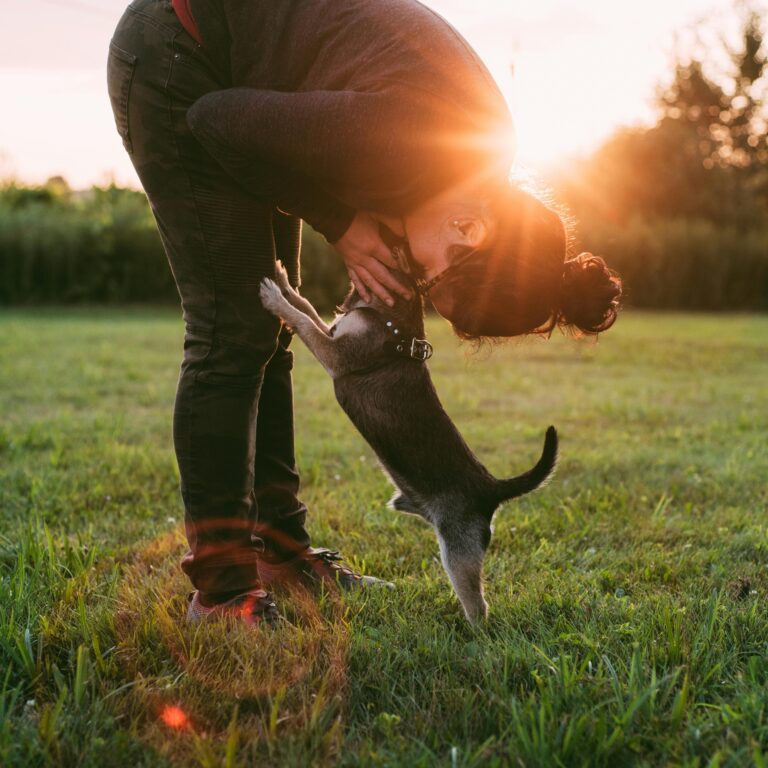
You just got a new puppy, but you are a bit apprehensive about introducing it to other dogs in the house. If you have ever had this feeling, it could be because you never got the chance to socialize your puppy with other dogs.
Well, whether your dog has friendly and playful or not, you must socialize with your dog if your dog is to have a good relationship with you, those you interact with, and other animals. Today’s post will look at some practical steps to help socialize your new puppy with other dogs.
To successfully socialize your new puppy with other dogs, you must follow these steps…
- Start in a controlled environment.
- Use positive reinforcements.
- Introduce your puppy to dogs of all ages and breeds.
- Pay attention to both your dog’s body language.
- Gradually increase your dog’s interaction with other dogs.
- Continue educating your dog on socialization.
In this post, we will consider all involved in puppy socialization. We will also consider the benefits of socializing your dog with other dogs and how it improves your life.
Table of Content
Puppy Socialization Explained
In this section, we will examine what each of these steps entails and how they can help make your socialization process successful. But before we do that, let’s look at what puppy socialization is.
Socializing your new puppy involves much more than introducing your new pet to humans and animals. It involves exposing your dog to various circumstances, new environments, and many scenarios. While doing this, you try to ensure your dog behaves the best way possible.
It also involves teaching your new puppy how to treat people and other animals they will meet and interact with.
And finally, socialization involves helping a dog gain or grow confidence in its ability while eliminating any traces of social anxiety.
When we understand puppy socialization this way, it will help us take doing it as a very important part of our puppy’s education. Let’s consider how the six steps above help puppy socialization training.
1. Start in a Controlled Environment
Socializing your puppy or dog with another dog is beneficial for the following reasons.
Limited exposure to different stimuli
In a conservative environment, there may be fewer opportunities for the dogs to encounter a diverse range of people, animals, objects, and environments.
This limited exposure can hinder their ability to adapt to new situations and can lead to fear or anxiety when faced with unfamiliar stimuli.
Restricted social interactions
If the conservative environment restricts interactions with other dogs or people, the dogs may have fewer opportunities to learn appropriate social skills and behaviors.
This can result in difficulties in understanding and communicating with other dogs, leading to fear, aggression, or poor socialization.
Reinforcement of fear or anxiety
Conservative environments that reinforce or encourage fearful or anxious behavior can hinder socialization.
Dogs may become more fearful or reactive when exposed to new experiences due to a lack of positive reinforcement or guidance in navigating novel situations.
2. Use Positive Reinforcement
When a puppy socializes with other dogs, it is important to use positive reinforcement. This is because of several reasons.
Encourages desired behavior
Positive reinforcement involves rewarding desired behaviours with treats, praise, or other rewards. When a puppy interacts well with other dogs during socialization, positive reinforcement helps reinforce and strengthen that behaviour.
This encourages the puppy to behave appropriately and positively during future social interactions.
Builds positive associations
Puppies develop positive associations with other dogs by associating socialisation with positive experiences, such as rewards and praise.
This helps to reduce fear, anxiety, or negative reactions towards unfamiliar dogs and to create a foundation for healthy and enjoyable social interactions.
Reinforces appropriate play behavior
Puppies learn how to play and interact with other dogs through socialization. Positive reinforcement allows trainers and owners to reinforce appropriate play behaviors, such as gentle biting, sharing toys, and respecting boundaries.
This helps the puppy understand the rules of social interaction with other dogs and promotes healthy and enjoyable play sessions.
Boosts confidence and reduces fear
Positive reinforcement during puppy socialization helps boost their confidence by providing positive experiences and rewards.
This confidence-building approach helps reduce fear and anxiety, allowing the puppy to approach new dogs and social situations more easily and comfortably.
Strengthens the human-dog bond
Positive reinforcement training during puppy socialization involves the active involvement of the owner or trainer.
By using rewards and positive interactions, this training approach strengthens the bond between the puppy and their human, enhancing trust and cooperation. This bond serves as a foundation for successful training and socialization experiences.
3. Introduce Your Puppy to Dogs of All Ages and Breeds.

Introducing your new puppy to dogs of different ages and breeds is a very delicate procedure and must be carried out with the most care. Here are six steps below to help make this process a smooth and beautiful one.
Choose suitable dogs
Start by selecting well-socialized dogs of different ages and breeds that have a calm and friendly temperament.
It’s best, to begin with, dogs that you know are comfortable and tolerant around puppies.
Controlled initial meeting
Find a neutral location, such as a park or a fenced yard, where both dogs can meet for the first time.
Keep both dogs on leashes initially, allowing them to observe each other from a safe distance. Keep the atmosphere calm and relaxed.
Positive association
Use treats and praise to create a positive association with the presence of the other dog.
Reward both dogs for calm behaviour and positive interactions. Gradually decrease the distance between the dogs, continuing to reward good behaviour.
Parallel walks
After the initial meeting, you can start parallel walks with the dogs. This means walking them side by side but at a safe distance.
This allows them to become more familiar with each other’s presence without direct interaction, reducing tension and potential conflicts.
Controlled interactions
As both dogs become more comfortable, you can gradually introduce controlled interactions. Start with brief, supervised play sessions in a controlled environment.
Observe their body language closely and intervene if necessary to prevent any negative behaviour. Reinforce positive interactions with treats and praise.
Continuous socialization
Continue to expose your puppy to dogs of different ages and breeds in various environments.
This can include puppy playdates, training classes, or supervised visits to dog-friendly parks. Always monitor interactions and provide positive reinforcement for appropriate behaviour.
Take it slow
Remember that every dog is different, and some may require more time and patience to adjust to new dogs.
Allow for gradual progress and never force interactions if either dog seems uncomfortable or stressed. It’s better to take things at a pace that ensures positive experiences for both dogs.
4. Pay Attention to the Body Language Of both Dogs.
Now this may be coming as the fourth step, but it is a step that must be followed throughout the whole training purpose.
Paying close attention to the way both dogs interact throughout the socialization process will make it very for you to detect any sudden change in interaction or any tension that may arise between all dogs interacting with each other.
This makes it very easy for you to break any negative interaction before it happens. Your goal for each socialisation period is to ensure your dog enjoys the best experience possible. This will help build your dog’s confidence and ensure it continues to look forward to interactions with other dogs.
Here are some signs to look for in either your dog or the other dog which will pose a red flag and would mean separating both dogs.
Signs of aggression or nervousness in dogs during interactions with other dogs can vary, but here are some common indicators to watch for.
Signs of aggression
- Growling or snarling: Vocalizations such as growling, snarling, or showing teeth indicate aggression and a warning to back off.
- Stiff body posture: A tense or rigid body posture, especially with a stiff tail and raised hackles (hair on the back), can signal aggression.
- Lunging or snapping: If a dog lunges towards another dog or snaps in their direction, it is a clear display of aggression.
- Prolonged direct staring: Staring directly at another dog without looking away can be a confrontational gesture and a sign of aggression.
- Aggressive body language: A dog displaying dominant or aggressive body language may exhibit behaviors such as a raised tail, raised ears, and a forward-leaning stance.
Signs of nervousness or fear
- Cowering or crouching: A dog that cowers crouches low to the ground or tries to hide behind objects is showing signs of fear or nervousness.
- Trembling or shaking: Shivering or trembling, even when it’s not cold, can indicate fear or anxiety.
- Tail tucking: A dog tucking its tail between its legs is a common sign of fear or submission.
- Excessive panting or drooling: Panting or drooling more than usual, especially in combination with other signs, can indicate nervousness or stress.
- Avoidance or avoidance behaviors: A dog trying to avoid interaction by turning away, moving away, or hiding behind its owner is likely feeling anxious or uncomfortable.
It’s essential to remember that dogs can display a combination of these signs or exhibit them in different contexts.
5. Gradually Increase Your Dog’s Interaction with Other Dogs.
During the socialization process, it is important to be patient and not rush the socialization process. We recommend starting one dog at a time and in a very controlled environment.
Only when you notice your dog’s confidence begin to grow, will you increase the number of dogs your puppy is allowed to interact with.
It is also important to gradually increase the age gaps between interactions. This will help your dog become confident around older dogs and not stressed or intimidated. Here are three other reasons why it is important to gradually increase your puppy’s interaction with other dogs.
Reduced stress and anxiety
Gradual introductions allow dogs to acclimate to new dogs and environments at their own pace, reducing stress and anxiety.
Sudden or overwhelming interactions can trigger fear or defensive behaviors in dogs. By taking it slowly and allowing for gradual exposure, dogs have the opportunity to build confidence and feel more comfortable during interactions.
Positive associations and trust-building
Gradual introductions provide the opportunity to create positive associations and build trust between dogs.
By introducing dogs in a controlled and positive manner, using treats, praise, and rewards, you can help establish positive experiences and associations with other dogs. This can help foster a sense of trust and confidence in future interactions.
Better behavior and social skills development
Gradual interactions with other dogs allow for the development of appropriate behavior and social skills.
Dogs learn how to communicate, play, and interact with other dogs through gradual exposure and practice.
This gradual process provides the opportunity for them to learn and refine their social skills in a safe and controlled environment.
It also allows owners to intervene and redirect behavior if needed, promoting positive interactions and preventing the development of negative behavior patterns.
6. Continue Educating Your Dog on Socialization.

Socializing your puppy is a job that continues until adulthood and cannot happen in one day. The more your puppy grows, the more it will continue to learn.
The most important thing is for you as the trainer to be patient and ready to put in the work. But if for some reason will not be dedicated enough for the job, it is important then to get a puppy trainer.
These trainers will not only help teach your dog basic socialization skills but will also teach your dog good manners through obedience training.
Final Thoughts
Puppy socialization is a fun process and very rewarding if you get it right. And for what it’s worth, you will be able to build a dog with a strong character. It is important to note that the only way you are going to achieve success in socializing your puppy or dog with other dogs is to follow the steps explained in this post to the letter. Well, you may still be wondering why it is important to socialize with your new puppy. This is explained in our previous post on the importance of puppy socialization. Click the link to find out more.



